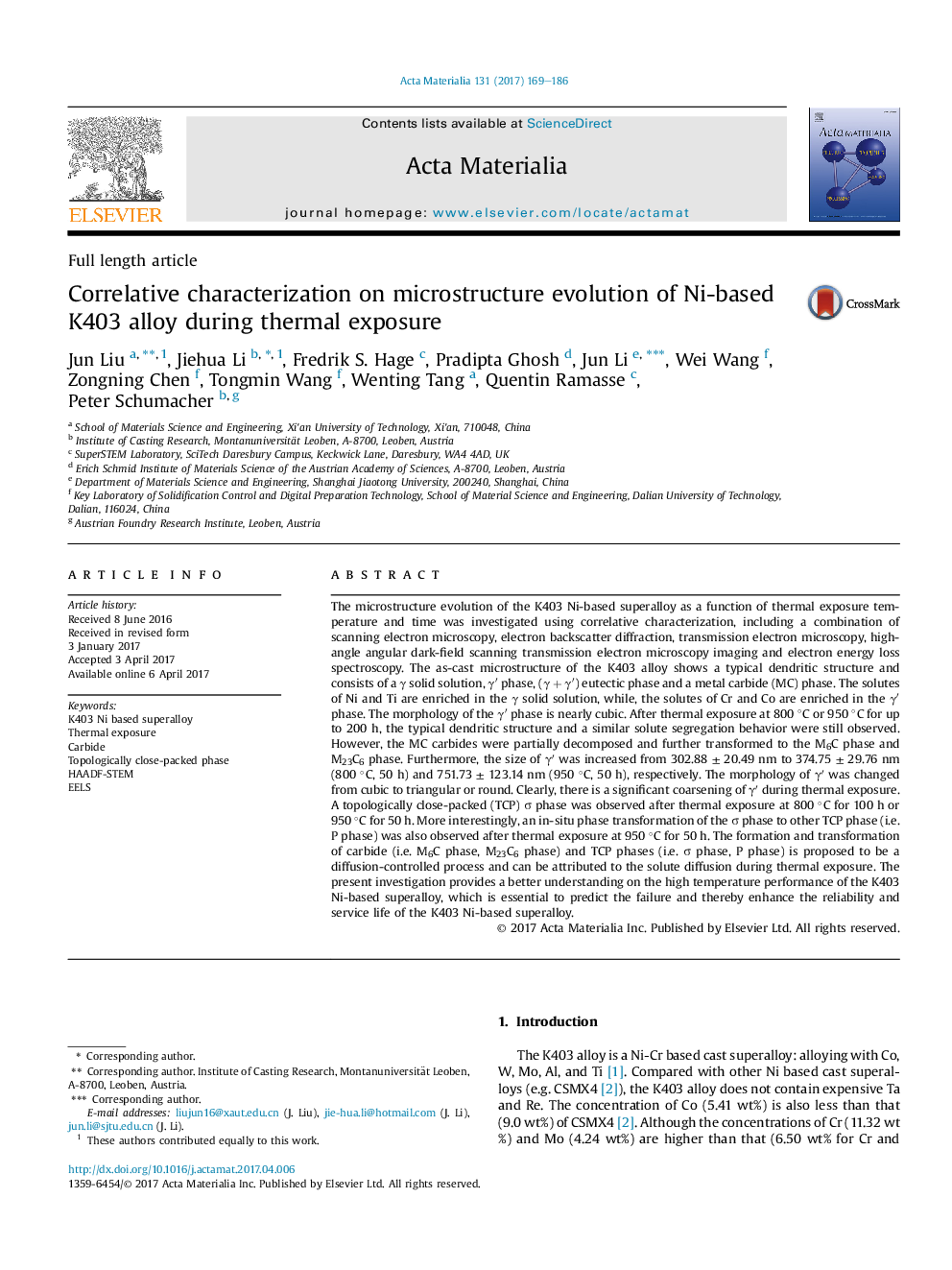| کد مقاله | کد نشریه | سال انتشار | مقاله انگلیسی | نسخه تمام متن |
|---|---|---|---|---|
| 5435847 | 1509545 | 2017 | 18 صفحه PDF | دانلود رایگان |

The microstructure evolution of the K403 Ni-based superalloy as a function of thermal exposure temperature and time was investigated using correlative characterization, including a combination of scanning electron microscopy, electron backscatter diffraction, transmission electron microscopy, high-angle angular dark-field scanning transmission electron microscopy imaging and electron energy loss spectroscopy. The as-cast microstructure of the K403 alloy shows a typical dendritic structure and consists of a γ solid solution, γⲠphase, (γ + γâ²) eutectic phase and a metal carbide (MC) phase. The solutes of Ni and Ti are enriched in the γ solid solution, while, the solutes of Cr and Co are enriched in the γⲠphase. The morphology of the γⲠphase is nearly cubic. After thermal exposure at 800 °C or 950 °C for up to 200 h, the typical dendritic structure and a similar solute segregation behavior were still observed. However, the MC carbides were partially decomposed and further transformed to the M6C phase and M23C6 phase. Furthermore, the size of γⲠwas increased from 302.88 ± 20.49 nm to 374.75 ± 29.76 nm (800 °C, 50 h) and 751.73 ± 123.14 nm (950 °C, 50 h), respectively. The morphology of γⲠwas changed from cubic to triangular or round. Clearly, there is a significant coarsening of γⲠduring thermal exposure. A topologically close-packed (TCP) Ï phase was observed after thermal exposure at 800 °C for 100 h or 950 °C for 50 h. More interestingly, an in-situ phase transformation of the Ï phase to other TCP phase (i.e. P phase) was also observed after thermal exposure at 950 °C for 50 h. The formation and transformation of carbide (i.e. M6C phase, M23C6 phase) and TCP phases (i.e. Ï phase, P phase) is proposed to be a diffusion-controlled process and can be attributed to the solute diffusion during thermal exposure. The present investigation provides a better understanding on the high temperature performance of the K403 Ni-based superalloy, which is essential to predict the failure and thereby enhance the reliability and service life of the K403 Ni-based superalloy.
476
Journal: Acta Materialia - Volume 131, 1 June 2017, Pages 169-186